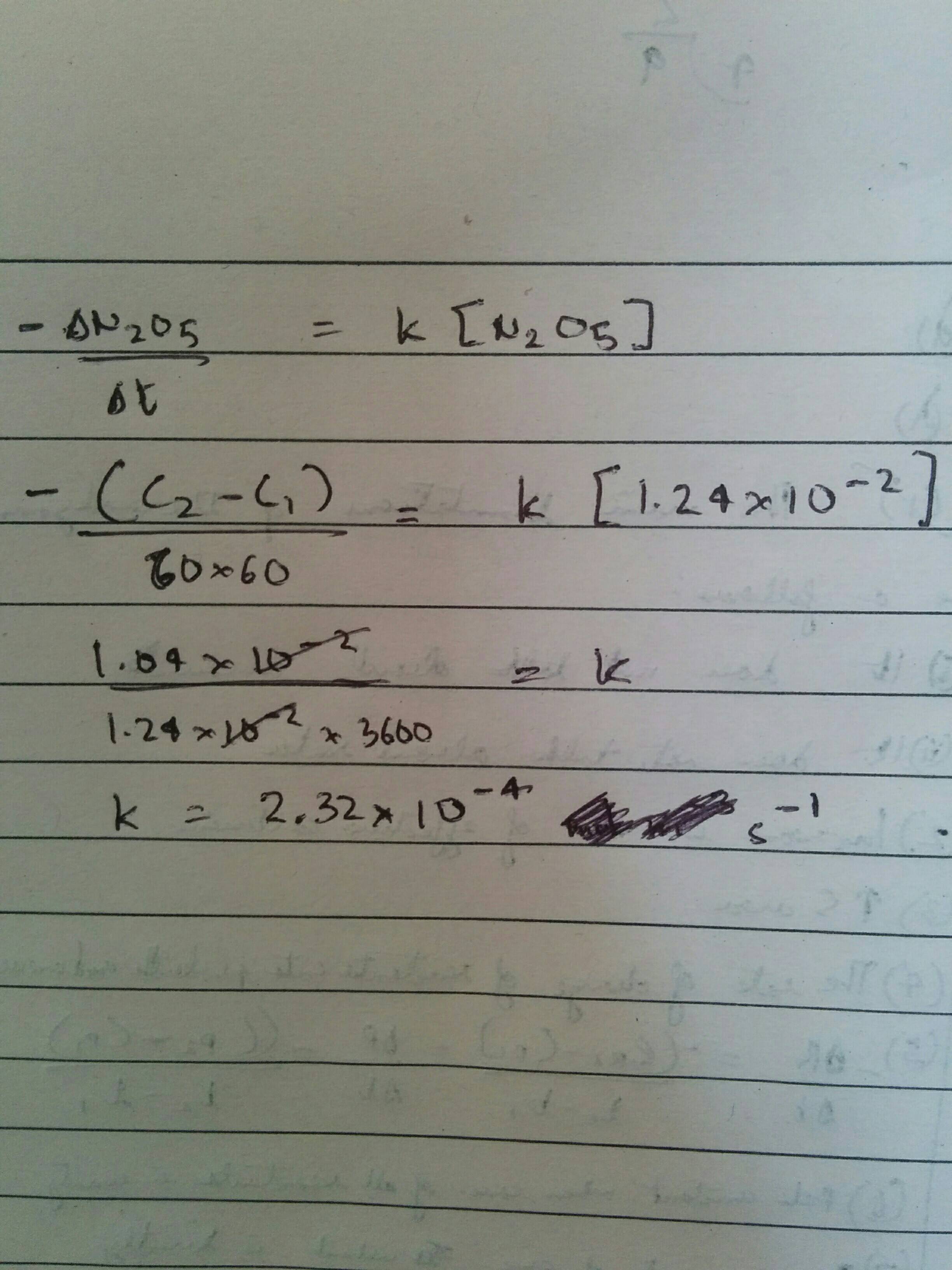The question asked was,
The initial concentration of $\ce{N2O5}$ in the first order reaction $$\ce{N2O5 -> 2NO2 + 1/2O2}$$ is $1.24\cdot 10^{-2}~\mathrm{mol\,L^{-1}}$ at 318K.
The concentration of $\ce{N2O5}$ decreases to $0.20\cdot 10^{-2}~\mathrm{mol\,L^{-1}}$ after 1 hour.
Calculate the rate constant at this temperature.
How i attempted to solve this is as follows:- 
The answer given, however, is $4.82 \times 10^{-4}\ \mathrm{s{-1}}$. What have I understood incorrectly?
